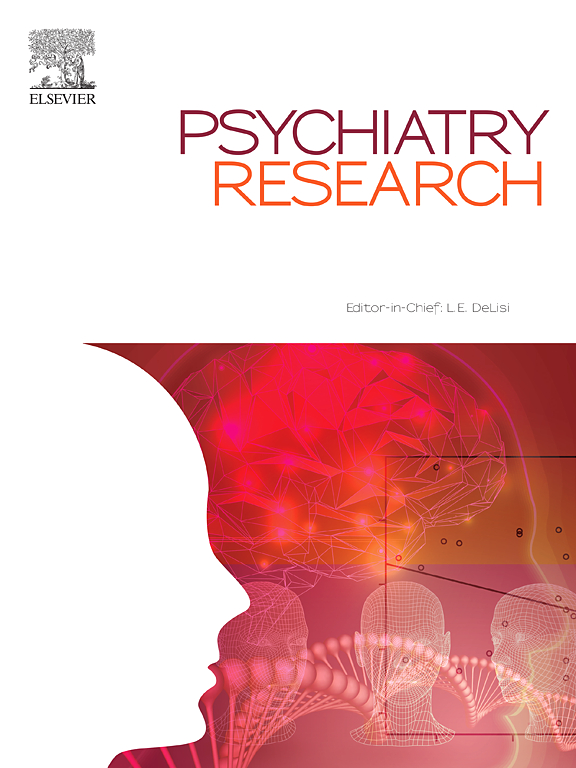The economic burden of schizophrenia spectrum disorders: clinical and functional correlates and predictors of direct costs. A retrospective longitudinal study
IF 3.9
2区 医学
Q1 PSYCHIATRY
引用次数: 0
Abstract
The economic burden of schizophrenia amounts for 1.5-3 % of healthcare expenses in developed countries, and ∼50 % derives from direct costs: 81 % of these are due to hospitalization, residential facilities and semi-residential facilities. Therefore, a better characterization of variables that influence direct costs represents a relevant issue.
A total of 276 individuals with schizophrenia spectrum disorders receiving treatment from the Community Mental Health Centers of Brescia (Italy) were included in the study: for each participant socio-demographic, clinical and functional characteristics were assessed, and data related to the use of services in 2022 (then converted to costs) were collected. Regression analyses were performed to identify predictors of costs.
A direct healthcare expenditure of 16477.23 (±32856.47) € per patient per year was identified. The main cost predictor was the PSP total score (p=0.005), followed by age of onset (p=0.020), and PANSS total score (p=0.033). Including PANSS sub-scales scores and PSP single items as potential predictors, the main predictor was the “socially useful activities” PSP item (p=0.002), followed by age of onset (p=0.011), and PANSS negative scale score (p=0.027).
Our findings underline the need to implement rehabilitative intervention focused on the improvement of psychosocial functioning and negative symptoms, also to reduce healthcare expenses.
精神分裂症谱系障碍的经济负担:临床和功能相关性以及直接成本的预测因素。一项回顾性纵向研究。
在发达国家,精神分裂症造成的经济负担占医疗费用的 1.5-3%,其中 50%来自直接费用:其中 81% 的费用来自住院、住宿设施和半住宿设施。因此,更好地描述影响直接费用的变量是一个相关问题。研究共纳入了 276 名在布雷西亚(意大利)社区精神健康中心接受治疗的精神分裂症谱系障碍患者:对每位患者的社会人口学、临床和功能特征进行了评估,并收集了 2022 年服务使用情况的相关数据(然后转换为成本)。研究人员进行了回归分析,以确定费用的预测因素。结果发现,每位患者每年的直接医疗支出为 16477.23 (±32856.47) 欧元。主要的成本预测因素是 PSP 总分(p=0.005),其次是发病年龄(p=0.020)和 PANSS 总分(p=0.033)。将 PANSS 分量表得分和 PSP 单项作为潜在的预测因素,主要的预测因素是 PSP 的 "社交活动 "项目(p=0.002),其次是发病年龄(p=0.011)和 PANSS 阴性量表得分(p=0.027)。我们的研究结果表明,有必要实施以改善心理社会功能和阴性症状为重点的康复干预措施,以降低医疗费用。
本文章由计算机程序翻译,如有差异,请以英文原文为准。
求助全文
约1分钟内获得全文
求助全文
来源期刊

Psychiatry Research
医学-精神病学
CiteScore
17.40
自引率
1.80%
发文量
527
审稿时长
57 days
期刊介绍:
Psychiatry Research offers swift publication of comprehensive research reports and reviews within the field of psychiatry.
The scope of the journal encompasses:
Biochemical, physiological, neuroanatomic, genetic, neurocognitive, and psychosocial determinants of psychiatric disorders.
Diagnostic assessments of psychiatric disorders.
Evaluations that pursue hypotheses about the cause or causes of psychiatric diseases.
Evaluations of pharmacologic and non-pharmacologic psychiatric treatments.
Basic neuroscience studies related to animal or neurochemical models for psychiatric disorders.
Methodological advances, such as instrumentation, clinical scales, and assays directly applicable to psychiatric research.
 求助内容:
求助内容: 应助结果提醒方式:
应助结果提醒方式:


